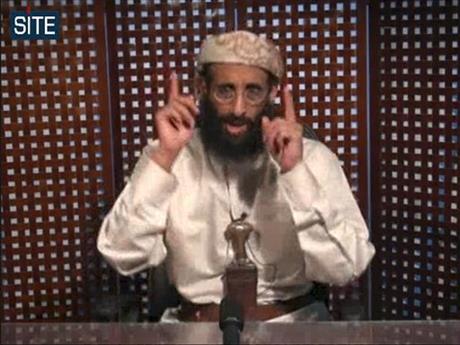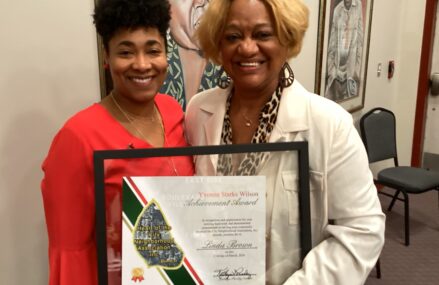
By The Associated Press
FILE – In this Nov. 8, 2010 file image taken from video and released by SITE Intelligence Group on Monday, Anwar al-Awlaki speaks in a video message posted on radical websites. Al-Awlaki, a key member of al-Qaida in the Arabian Peninsula, was killed on Sept. 30, 2011 in a drone strike in the mountains of Yemen. The 40-year-old American-Yemeni cleric emerged as an enormously influential preacher among militants living in the West, with his English-language Internet sermons calling for jihad, or holy war, against the United States. He was in contact with the accused perpetrators of the 2009 shooting rampage at Fort Hood that killed 13 people, the 2010 car bomb attempt in New York’s Times Square and the Christmas 2009 attempt to blow up an airliner heading to Detroit.(AP Photo/SITE Intelligence Group, File)
Al-Qaida in the Arabian Peninsula, the product of a merger between the terror group’s Yemeni and Saudi branches, is considered al-Qaida’s most dangerous branch of all.
The franchise has been blamed for directing a string of unsuccessful bomb plots against Americans. Those included a foiled plan to down a U.S.-bound airliner using a new, sophisticated explosive to be hidden in the bomber’s underwear, and a plot to send mail bombs on planes to the U.S. hidden in the toner cartridges of computer printers.
AQAP has been bolstering its operations in Yemen over the past few years after key Saudi operatives fled there following a major crackdown in their homeland. The fighters, including those returning from the wars in Afghanistan and Iraq, have established sanctuaries among a number of Yemeni tribes, particularly in three provinces bordering Saudi Arabia. The group is estimated to have hundreds of fighters as well as thousands of followers.
The group overran entire towns and villages in 2011, taking advantage of a security lapse during nationwide protests that eventually ousted Yemen’s longtime ruler, Ali Abdullah Saleh. Backed by the U.S. military, Yemen’s army was able to regain control of the southern region, but al-Qaida militants continue to launch deadly attacks on security forces. In response, the U.S. has stepped up its drone war.
LEADERS:
— NASSER AL-WAHISHI
Once Osama bin Laden’s aide-de-camp, Wahishi is the top leader of AQAP. In February 2006, Wahishi was among 23 al-Qaida militants who broke out of a detention facility in Sanaa, Yemen’s capital.
In May 2011, al-Wahishi posted a eulogy for the slain al-Qaida leader on Islamic extremist websites in which he warned Americans “the matter will not be over” with bin Laden’s death and that “what is coming is greater and worse.” He said “jihad is glowing brighter” now than during bin Laden’s life.
Three months later, he vowed to continue the fight against the regime and Western powers. He condemned U.S. drone attacks on Yemen, which have killed civilians, and the “silence” of Yemen’s leaders to these attacks.
“My soldiers and those soldiers with me in the Arab gulf… will not give up nor give in until Islam is ruling by God’s will and strength,” al-Wahishi said. “Our war against the Zionist Crusaders remains, for they have chosen this war.”
— QASSEM AL-RAIMI
Al-Raimi became the group’s military commander and the brains behind a series of foiled attacks against Americans. In writings and videos, he vowed to topple Saleh’s regime and to strike America.
The Yemeni government has incorrectly announced al-Raimi’s death three times in strikes or clashes since 2007. Even on the run, he directs training camps in Yemen’s remote deserts and mountains, organizes cells and plans attacks at home and abroad, according to Yemeni officials.
— IBRAHIM HASSAN AL-ASIRI
Al-Asiri is AQAP’s chief bomb-maker, responsible for building the underwear bomb used to try to bring down a Detroit-bound jetliner on Christmas in 2009 and the printer-cartridge bombs intercepted in U.S.-bound cargo planes a year later. U.S. intelligence officials say he has resurfaced recently in Yemen, after months in hiding.
OTHERS (DEAD OR ALIVE) LINKED TO AQAP:
— ANWAR AL-AWLAKI
The 40-year-old American-Yemeni cleric emerged as an enormously influential preacher among militants living in the West, with his English language Internet sermons calling for jihad, or holy war, against the United States. He was in contact with the accused perpetrators of the 2009 shooting rampage at Fort Hood, Texas, that killed 13 people, the 2010 car bomb attempt in New York’s Times Square and the Christmas 2009 attempt to blow up an airliner heading to Detroit. Al-Awlaki was killed on Sept. 30, 2011 in a drone strike in the mountains of Yemen.
— ABDULHAKIM MUHAMMAD
Muhammad, 28, is serving a life prison sentence for the June 2009 fatal shooting of a soldier outside a Little Rock, Ark., military recruiting station. Muhammad, who changed his name from Carlos Bledsoe when he converted to Islam, grew up in the Memphis, Tenn., area and then traveled to Yemen, returning to the U.S. in 2008. Muhammad has described himself as a soldier in al-Qaida in the Arabian Peninsula and called the shooting “a jihadi attack.”
— MAJ. NIDAL NASAN
Hasan, 42, a U.S.-born Army psychiatrist of Palestinian descent, is accused in the 2009 shooting rampage that killed 13 people at the Army post in Fort Hood, Texas. The Hasan case prompted a slew of finger-pointing among government agencies over why more action wasn’t taken when red flags appeared, particularly his e-mail contact with a radical cleric in Yemen.
— SHARIF MOBLEY
Sharif Mobley, 29, a New Jersey man of Somali descent is imprisoned in Yemen, suspected of ties to al-Qaida and killing a guard in a failed escape attempt. During his time in the United States, Mobley passed a criminal background check and worked as a laborer at a number of nuclear power plants. There is no indication that his work had any connection to his alleged involvement with terrorists. A former friend said Mobley became increasingly radicalized in his Muslim beliefs before he moved to Yemen.


